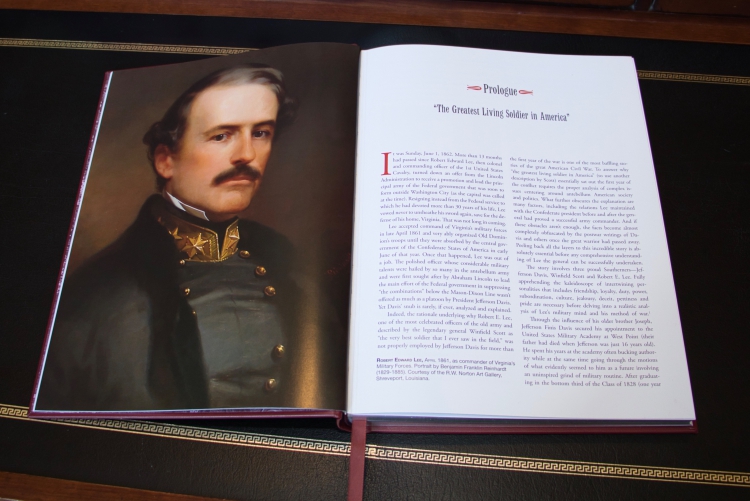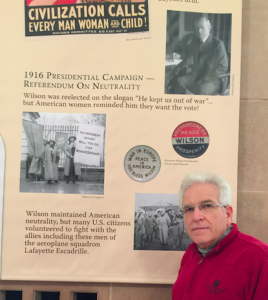UPDATE DECEMBER 7, 2020
MacGowan & Lombardy’s The Great War was completely funded on Kickstarter and will ship in April 2021
Hello, playtesters.
My apologies for not sending out updates on the card game in 2018. Read the reasons below for the delay, and how that helped improve the game.
November 2017
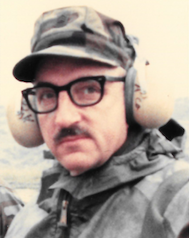 The following occurred after my last 2017 update to the playtesters.
The following occurred after my last 2017 update to the playtesters.
On 18 November 2017 fellow founder and editor of my Conflict magazine from the 1970s was found dead in his home. He was 71, but this was still unexpected.
Master Sergeant “TP” Schweider, USMCR (Ret.) lived in Twentynine Palms (southern California) where I occasionally visited him. TP’s only family was a few friends like me that he had “adopted” over the years. He was a good friend and mentor.
Over several months I helped rescue TP’s five cats and clear out his house. He is missed. He will be remembered.
January 2018
Professionally, the New Year brought an opportunity, one that rapidly consumed most of my time for the rest of the year. This work proved very valuable to the development of the card game (explained at the end.)
In January of last year, I became a member of the World War I Armistice Centennial Commemoration Committee. The non-profit San Francisco War Memorial and Performing Arts Center Foundation formed the Committee in late 2017. The Foundation administrates the War Memorial Opera House (where the SF ballet performs), Davies Symphony Hall, the Herbst Theater, and War Memorial Veterans Building. The Veterans Building was dedicated in 1932 to honor veterans of the Great War.
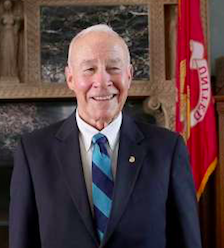 The chair of the Committee is Major General J. Michael Myatt, USMC (Ret.) who is a trustee on the board of the Foundation. He is a Vietnam veteran and was commander of the 1st Marine Division that liberated Kuwait during Operation Desert Storm in 1991. It is an honor to serve on this Committee.
The chair of the Committee is Major General J. Michael Myatt, USMC (Ret.) who is a trustee on the board of the Foundation. He is a Vietnam veteran and was commander of the 1st Marine Division that liberated Kuwait during Operation Desert Storm in 1991. It is an honor to serve on this Committee.
My first task was to explain to the Foundation’s board of trustees why the war was so important and still affected Americans today. I gave two brief talks that were well received. I turned one of those PowerPoint presentations into a video for the exhibit.
I became the historical consultant and helped create the exhibits and displays for the War Memorial. My job was to explain America’s role in the Great War and its impact of transforming the United States into a major world power. I immersed myself in researching the history of the period. I wrote and edited the text for the signs and displays. I located appropriate photos and images, and produced a video.
May 2018
 By Memorial Day weekend eight large banners hung in the lobby of the Herbst Theatre. These banners tell the story of America’s initial desire to stay out of a foreign war in 1914. They go on to tell of the growing sympathy for the victims and refugees, and the horror at the unprecedented numbers of casualties. The story finally turns to the United States joining the Allies as a co-belligerent.
By Memorial Day weekend eight large banners hung in the lobby of the Herbst Theatre. These banners tell the story of America’s initial desire to stay out of a foreign war in 1914. They go on to tell of the growing sympathy for the victims and refugees, and the horror at the unprecedented numbers of casualties. The story finally turns to the United States joining the Allies as a co-belligerent.
There are also banners about women, financing the war, combat and technology, and ending the war (the Armistice). The final banner explains the creation and dedication of the War Memorial buildings to honor “all who served.”
All eight banners can be viewed on the American Legion website: https://alwmcsf.org/ww1/
October 2018
In 2018, General Myatt asked me to present my “Why is World War One Important” talk to a Senior Leaders Seminar during Fleet Week. These men and women included emergency responders, politicians, and conference participants from the Navy, Marines, and Army Corps of Engineers.
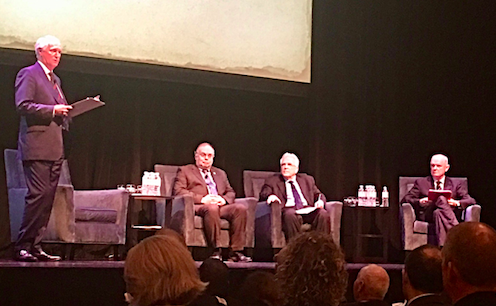
Christopher Oldfield, Australian Consul General in San Francisco (on my left), and Rear Admiral Sam Cox, U.S. Navy (Ret.), Director of Naval History and Heritage Command. Standing is the panel host Brigadier General Roderick Macdonald. British Royal Army (Ret.). Macdonald commanded 59 Independent Commando Squadron, Royal Engineers, during the Falklands War.
I then served on a panel about World War One.
In addition to the amount of work outlined above and for the soon-to-open Veterans Gallery exhibit, I helped design a set of eight commemorative cachets. These went on sale in October. They are collectible envelopes featuring the “Turning the Tide” Forever™ postage stamp. The U.S. Postal Service issued the stamp in 2018 to commemorate the 100th anniversary of the 1918 Armistice.
The cachet team included General Myatt, Ed Flowers, a Director of San Francisco Fleet Week and a member of the San Francisco Marines’ Memorial Club, and me. Flowers is a stamp aficionado who designed the Buffalo Soldiers cachet (among others) and worked with General Myatt on the 2005 release of the four Distinguished Marine postage stamps on the 230th birthday of the U.S. Marine Corps.
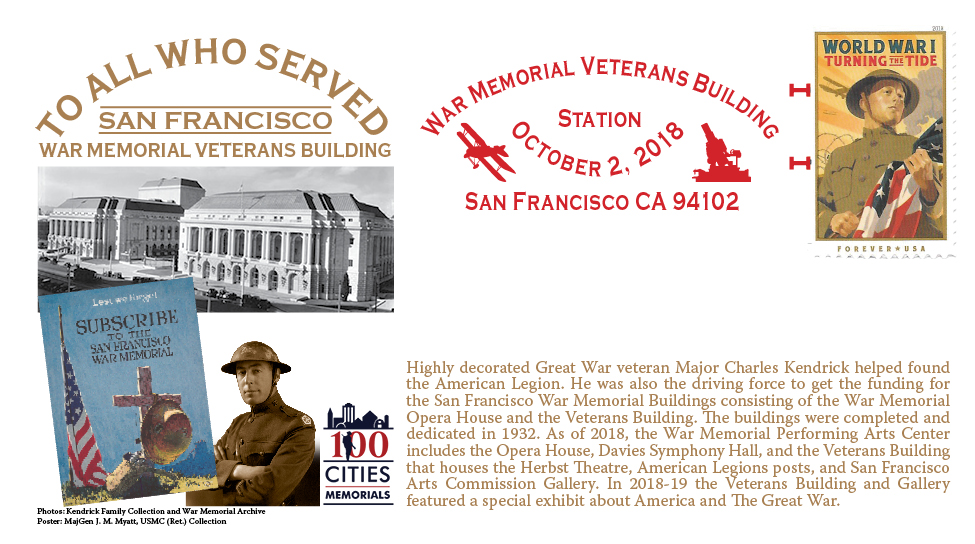 These eight “Turning the Tide” cachets feature historical Great War illustrations of the U.S. Marine Corps, Army, Navy, Air Service, African Americans, women, and animals. Charles Kendrick and the San Francisco War Memorial buildings are also included. You can see them here:
These eight “Turning the Tide” cachets feature historical Great War illustrations of the U.S. Marine Corps, Army, Navy, Air Service, African Americans, women, and animals. Charles Kendrick and the San Francisco War Memorial buildings are also included. You can see them here:
https://lombardystudios.com/commemorate-remember-world-war-one/
November 2018
The Armistice signed in 1918 marked the end of the war for America. The Eleventh hour of the eleventh day of the eleventh month became a remembrance day for the United States, France, Britain, Canada, Australia and New Zealand. It evolved into today’s Veterans Day in the U.S.
On November 11, 2018 the exhibit called The Great War / World War One – The American Experience opened. It is located in the Veterans Gallery, at the end of the lobby of the War Memorial Veterans Building. The exhibit includes hundreds of artifacts including uniforms, trench art, weapons and equipment, two videos, an aerial dogfight diorama, and dozens of images with descriptive text and stories.
 The United States World War I Centennial Commission chose San Francisco’s War Memorial Veterans Building as one of its 100 Cities / 100 Memorials matching grant. This was awarded to preserve World War I Centennial Memorial monuments.
The United States World War I Centennial Commission chose San Francisco’s War Memorial Veterans Building as one of its 100 Cities / 100 Memorials matching grant. This was awarded to preserve World War I Centennial Memorial monuments.
I assembled a team to videotape and photograph the banners and exhibit displays. I am now working on an augmented video tour that we will eventually post on YouTube. You could then visit the exhibit online even after it closes later in 2019. The banners will remain on permanent display on the second floor.
June 2019
I continue to serve on the renamed Veterans Commemoration Committee. Plans include projects to honor the veterans of the Korean War, World War Two, Vietnam, etc.
Visiting the Banners and Exhibit
The public can view the banners when the War Memorial Veterans Building is open. Hours are from 8 am to 10 pm Monday-Sunday. They are open later if there are building activities. In early July, they will move to the second floor for permanent display outside the offices of the American Legion. The Legion is an an organization formed in 1919 by the veterans of the Great War.
As noted before, you can see the eight banners on the American Legion website: https://alwmcsf.org/ww1/
The Great War / World War One exhibit in the Veterans Gallery is open to the public. Admission is free. You can find their hours at https://alwmcsf.org/gallery/ww1_exhibit2/ .
If you’re visiting the area, I am available to give tours.
How All of this Affected MacGowan and Lombardy’s The Great War Card Game
Based upon your feedback, the game improved to version 3 in 2017. Mark Kaczmarek’s development of the game, plus my past year of research for the Committee, has given the game:
• A greater variety of cards and images.
• Cards representing more nations and a greater number of weapons such as seaplanes and seacoast artillery.
• Random Event cards such as bad weather and bad luck.
• Bonus cards for terrain, improvements to weapons and doctrine, etc.
The extra cards allow for more scenarios (some cards are planned as stretch goals for the Kickstarter launch).
I hope these changes make the game more challenging—but remain a fun “filler” game.
Dana

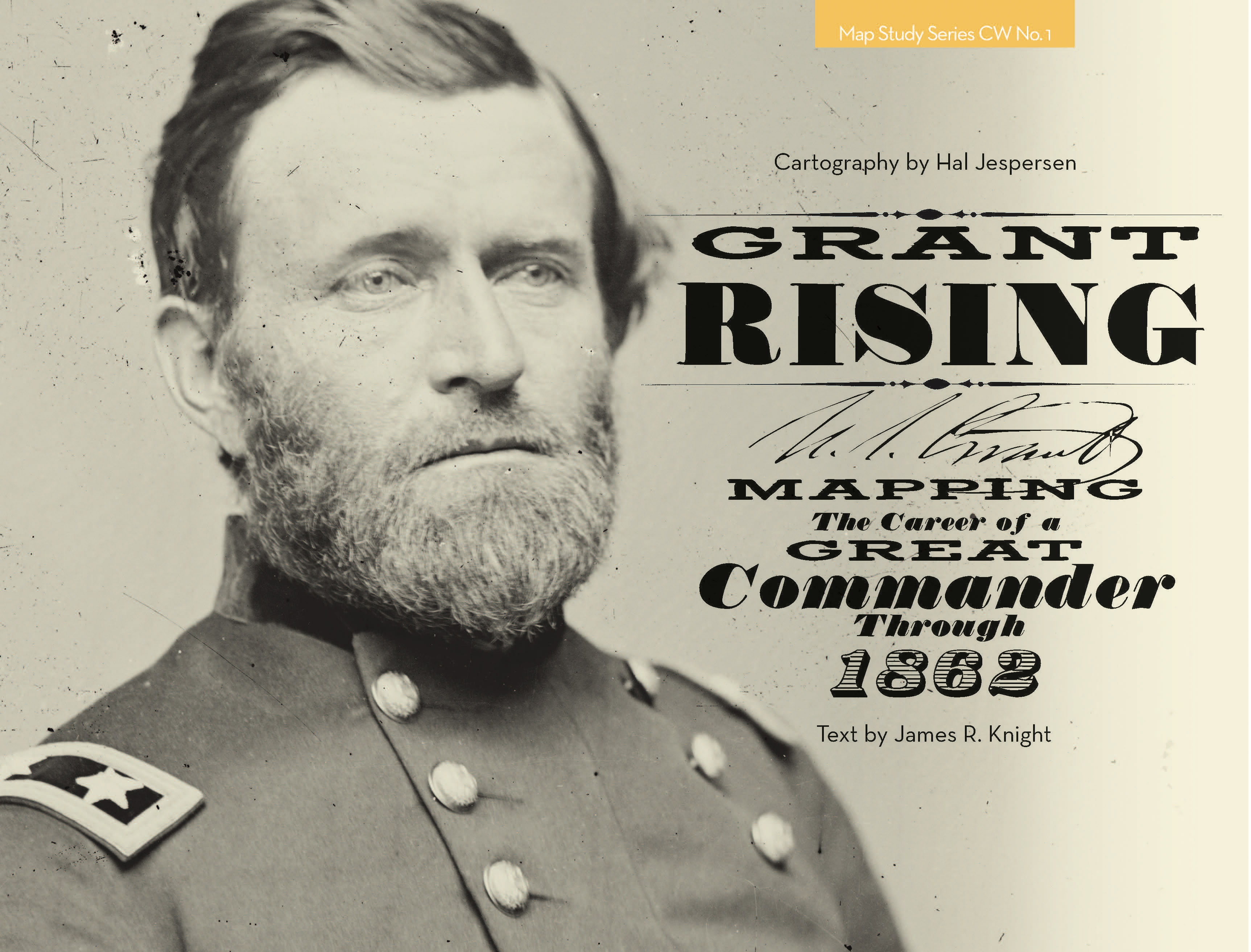
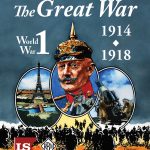
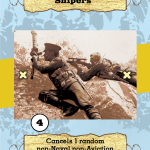
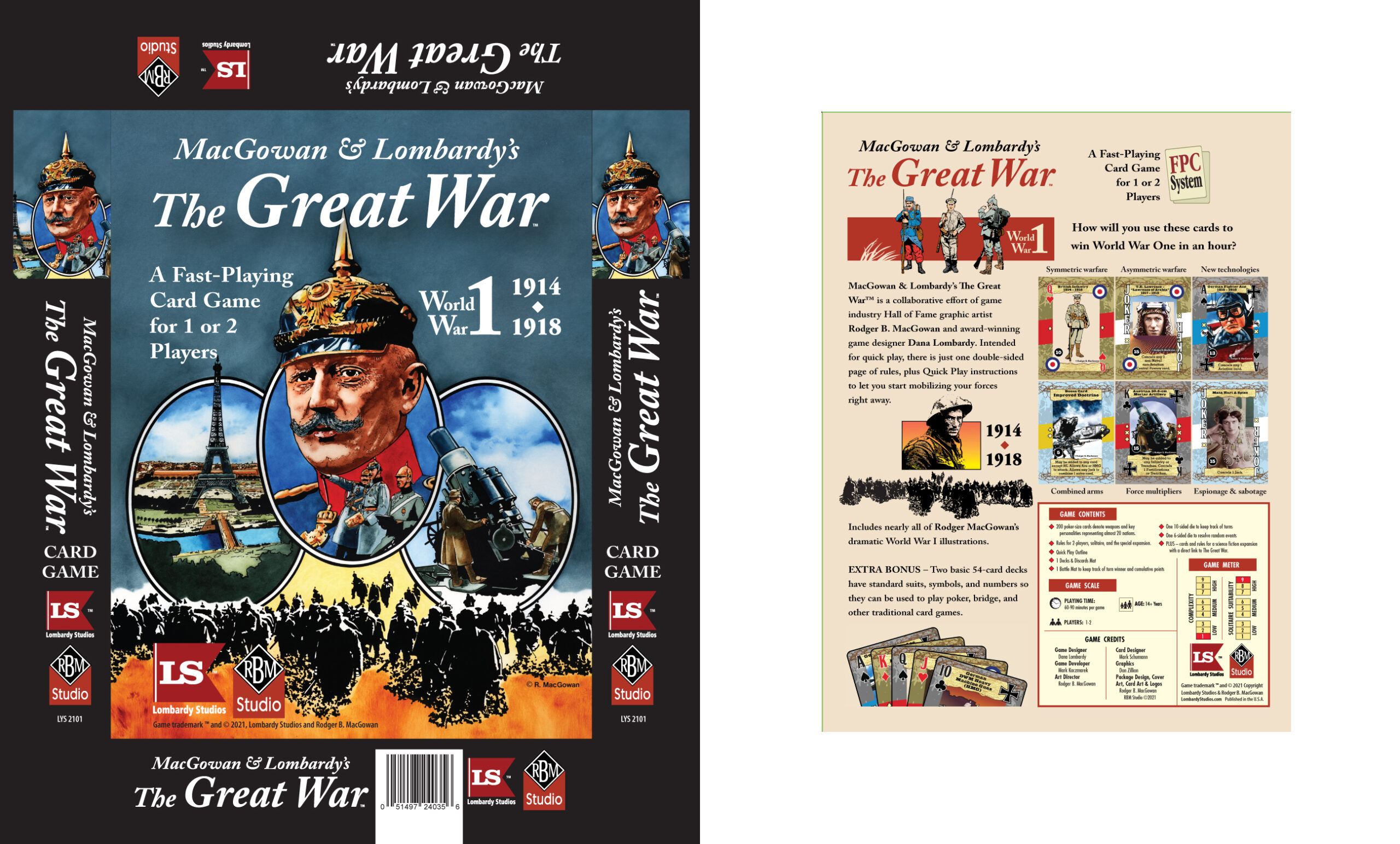
 The following occurred after my last 2017 update to the playtesters.
The following occurred after my last 2017 update to the playtesters. The chair of the Committee is Major General J. Michael Myatt, USMC (Ret.) who is a trustee on the board of the Foundation. He is a Vietnam veteran and was commander of the 1st Marine Division that liberated Kuwait during Operation Desert Storm in 1991. It is an honor to serve on this Committee.
The chair of the Committee is Major General J. Michael Myatt, USMC (Ret.) who is a trustee on the board of the Foundation. He is a Vietnam veteran and was commander of the 1st Marine Division that liberated Kuwait during Operation Desert Storm in 1991. It is an honor to serve on this Committee. By Memorial Day weekend eight large banners hung in the lobby of the Herbst Theatre. These banners tell the story of America’s initial desire to stay out of a foreign war in 1914. They go on to tell of the growing sympathy for the victims and refugees, and the horror at the unprecedented numbers of casualties. The story finally turns to the United States joining the Allies as a co-belligerent.
By Memorial Day weekend eight large banners hung in the lobby of the Herbst Theatre. These banners tell the story of America’s initial desire to stay out of a foreign war in 1914. They go on to tell of the growing sympathy for the victims and refugees, and the horror at the unprecedented numbers of casualties. The story finally turns to the United States joining the Allies as a co-belligerent.



 The United States World War I Centennial Commission chose San Francisco’s War Memorial Veterans Building as one of its 100 Cities / 100 Memorials matching grant. This was awarded to preserve World War I Centennial Memorial monuments.
The United States World War I Centennial Commission chose San Francisco’s War Memorial Veterans Building as one of its 100 Cities / 100 Memorials matching grant. This was awarded to preserve World War I Centennial Memorial monuments.

